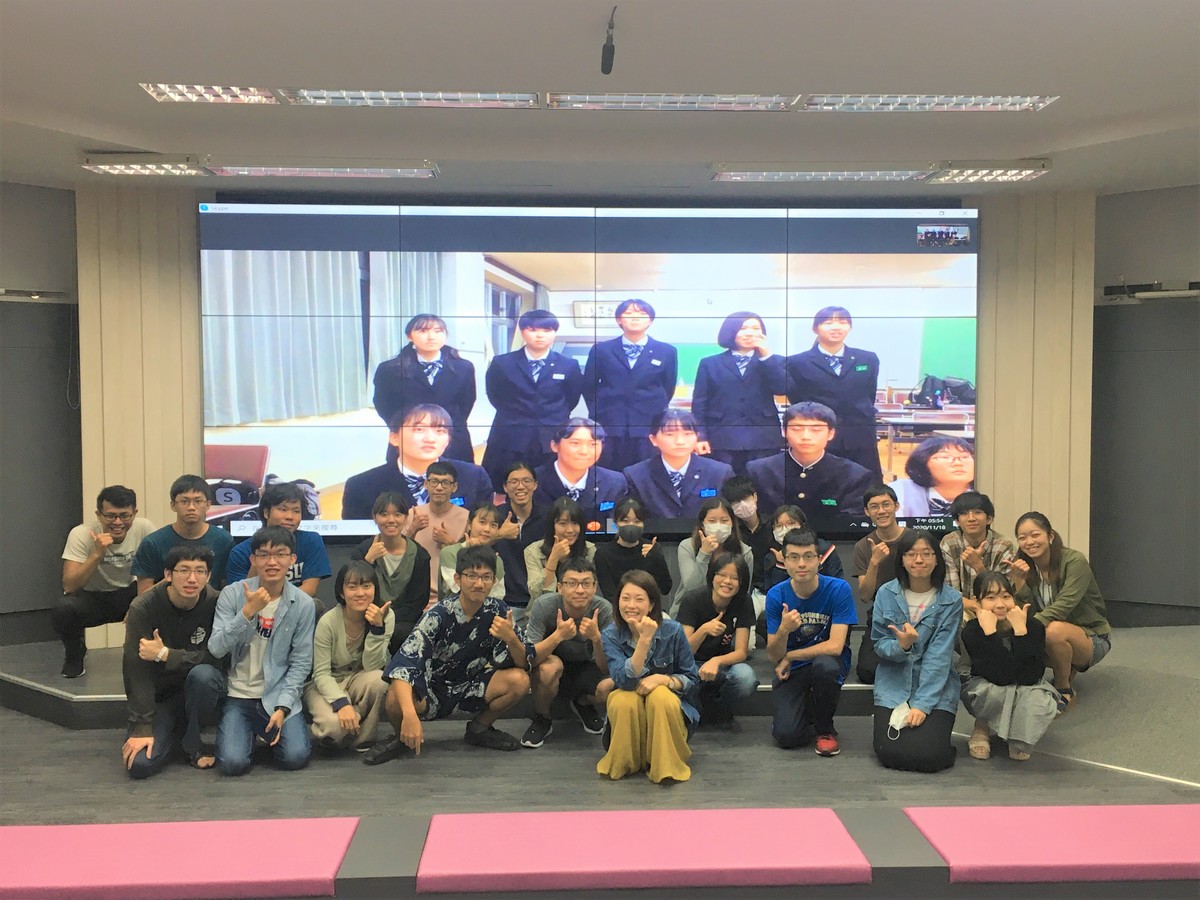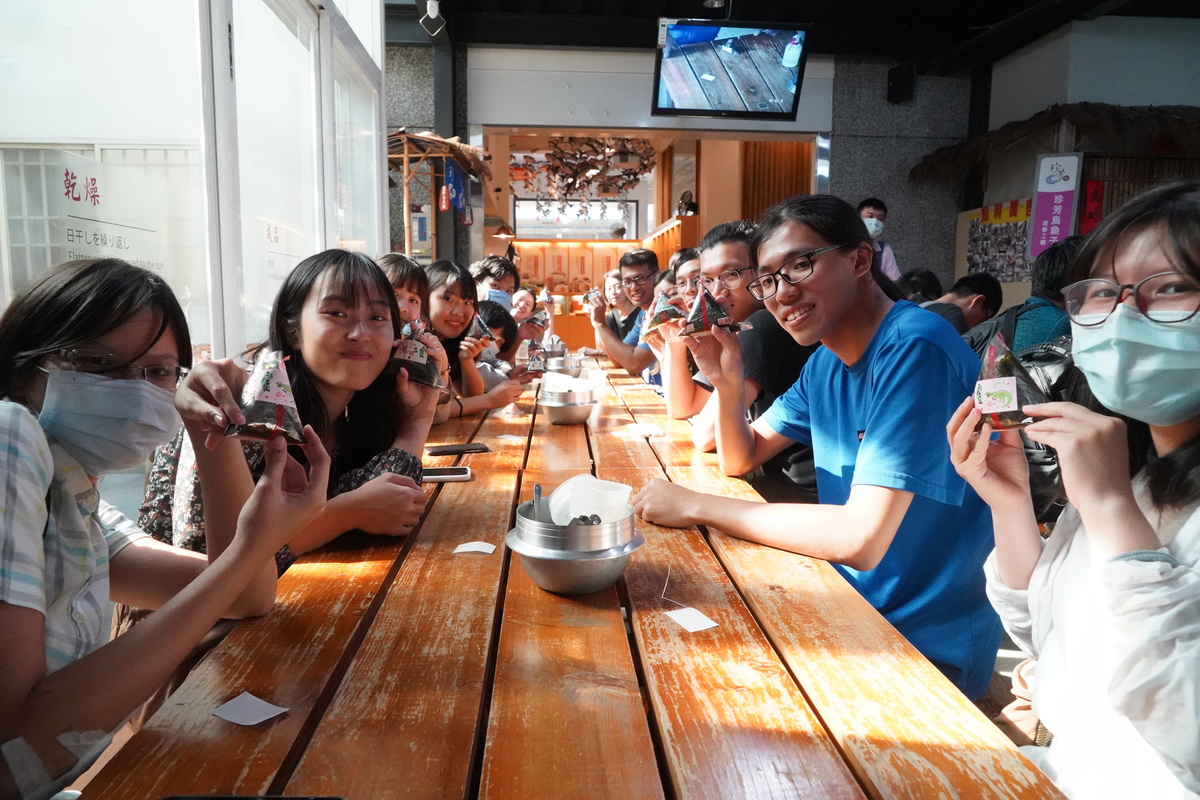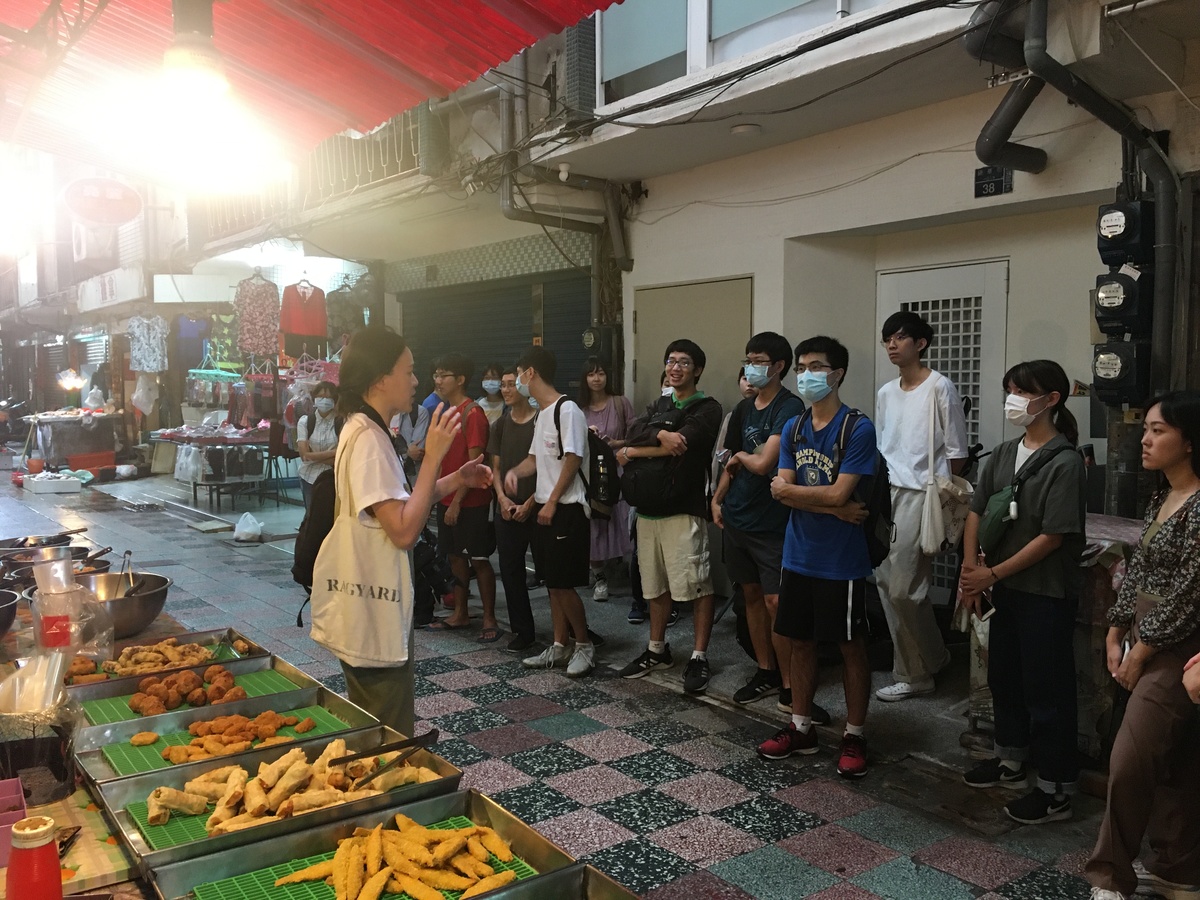Students explore culture with Minamiuwa High School in Japan



2021-03-26
Taiwan and Japan might be separated by nautical miles of water, but the academic and cultural exchange of both countries has not been affected by the geographical distance nor the pandemic. NSYSU Assistant Professor Kayo Ito, who comes from Japan, opened the “Comparative study of culture of Taiwan and Japan” course, attracting Taiwanese and Japanese students of NSYSU. She took the students to explore the lanes of the Caoya and Cianjhen districts of Kaohsiung, search for local culture, and engage in exchange via videoconference with the students of Minamiuwa High School in Ehime prefecture, Japan. During their exchange, the students of both schools expressed their wish for the pandemic to end soon so that they can meet in real life.
The “Comparative study of culture of Taiwan and Japan” course leads the students to understand the theory starting from practice, taking them down the streets of the Caoya and Cianjhen districts in Kaohsiung to interview locals. Professor Ito emphasized that this area is lies in the proximity of a strategic place for fishery in the Taiwan – Cianjhen Fishing Port, just like the Ehime prefecture in Japan, which makes both places share cultural features – this helped strengthen the exchange between the students. In class, Professor Ito uses the Japanese language to communicate with both the Taiwanese and Japanese students and guides them on their visit the Caoya-Cianjhen districts to see the Zhen-Nan Temple and the Lane 138 of Zhenhua Street, which used to be called the “Ginza shopping center”, as well as the nearby Hong Yu Museum of Cuttlefish Balls and Jhen-Fang Mullet Roe Factory.
The students of the course had very different perspectives as they came from different backgrounds and cultures. While visiting Jhen-Fang Mullet Roe Factory, the students had an opportunity to learn to make rice rolls with mullet roe. Professor Ito said that the mullet roe was seen as a representative food of Taiwan by Japanese students, and they found combining it with traditional Japanese onigiri as something new. The course deepened students’ knowledge of the dietary culture and food production in both Taiwan and Japan.
After the students completed their field study in Cianjhen and Caoya districts, they gathered everything they learned in class and the knowledge on the local scenery and food culture in Kaohsiung. Then, in a videoconference, they connected with the students in Japan, shared their knowledge of the local lifestyle and culture of Kaohsiung and its convenient public transportation – metro and light rail. The exchange through videoconference made the pupils of Minamiuwa High School want to come to Kaohsiung for their graduation trip. Many of them said that they would “find a way to come to Taiwan after graduation as soon as possible”.
“Taiwan and Japan are my homelands!”. Student of the Department of Physics, Chun Wang, whose father is Taiwanese and mother is a Japanese from Hokkaido, said that he was surrounded by the Chinese and Japanese language from infancy and can speak, write, understand and read both languages fluently. Living in Taiwan for his studies, he doesn’t get many opportunities to speak Japanese nor does he have many Japanese friends and by joining Professor Ito’s course, he got to know Kaohsiung better and was happy to experience the culture of both countries in one course.
Dean of Si Wan College, Professor Dun-Hou Tsai said that the University encourages the students to build a connection with the local Taiwanese culture and opens up students’ horizons and lets them see the world by teaching in a multi-lingual environment. This videoconference with the Minamiuwa High School “realized globalization by localizing education and knowledge” and was a joint exploration of the possibilities of the new era of sustainable cities.
Taiwan and Japan might be separated by nautical miles of water, but the academic and cultural exchange of both countries has not been affected by the geographical distance nor the pandemic. NSYSU Assistant Professor Kayo Ito, who comes from Japan, opened the “Comparative study of culture of Taiwan and Japan” course, attracting Taiwanese and Japanese students of NSYSU. She took the students to explore the lanes of the Caoya and Cianjhen districts of Kaohsiung, search for local culture, and engage in exchange via videoconference with the students of Minamiuwa High School in Ehime prefecture, Japan. During their exchange, the students of both schools expressed their wish for the pandemic to end soon so that they can meet in real life.
The “Comparative study of culture of Taiwan and Japan” course leads the students to understand the theory starting from practice, taking them down the streets of the Caoya and Cianjhen districts in Kaohsiung to interview locals. Professor Ito emphasized that this area is lies in the proximity of a strategic place for fishery in the Taiwan – Cianjhen Fishing Port, just like the Ehime prefecture in Japan, which makes both places share cultural features – this helped strengthen the exchange between the students. In class, Professor Ito uses the Japanese language to communicate with both the Taiwanese and Japanese students and guides them on their visit the Caoya-Cianjhen districts to see the Zhen-Nan Temple and the Lane 138 of Zhenhua Street, which used to be called the “Ginza shopping center”, as well as the nearby Hong Yu Museum of Cuttlefish Balls and Jhen-Fang Mullet Roe Factory.
The students of the course had very different perspectives as they came from different backgrounds and cultures. While visiting Jhen-Fang Mullet Roe Factory, the students had an opportunity to learn to make rice rolls with mullet roe. Professor Ito said that the mullet roe was seen as a representative food of Taiwan by Japanese students, and they found combining it with traditional Japanese onigiri as something new. The course deepened students’ knowledge of the dietary culture and food production in both Taiwan and Japan.
After the students completed their field study in Cianjhen and Caoya districts, they gathered everything they learned in class and the knowledge on the local scenery and food culture in Kaohsiung. Then, in a videoconference, they connected with the students in Japan, shared their knowledge of the local lifestyle and culture of Kaohsiung and its convenient public transportation – metro and light rail. The exchange through videoconference made the pupils of Minamiuwa High School want to come to Kaohsiung for their graduation trip. Many of them said that they would “find a way to come to Taiwan after graduation as soon as possible”.
“Taiwan and Japan are my homelands!”. Student of the Department of Physics, Chun Wang, whose father is Taiwanese and mother is a Japanese from Hokkaido, said that he was surrounded by the Chinese and Japanese language from infancy and can speak, write, understand and read both languages fluently. Living in Taiwan for his studies, he doesn’t get many opportunities to speak Japanese nor does he have many Japanese friends and by joining Professor Ito’s course, he got to know Kaohsiung better and was happy to experience the culture of both countries in one course.
Dean of Si Wan College, Professor Dun-Hou Tsai said that the University encourages the students to build a connection with the local Taiwanese culture and opens up students’ horizons and lets them see the world by teaching in a multi-lingual environment. This videoconference with the Minamiuwa High School “realized globalization by localizing education and knowledge” and was a joint exploration of the possibilities of the new era of sustainable cities.
Click Num:
Share
